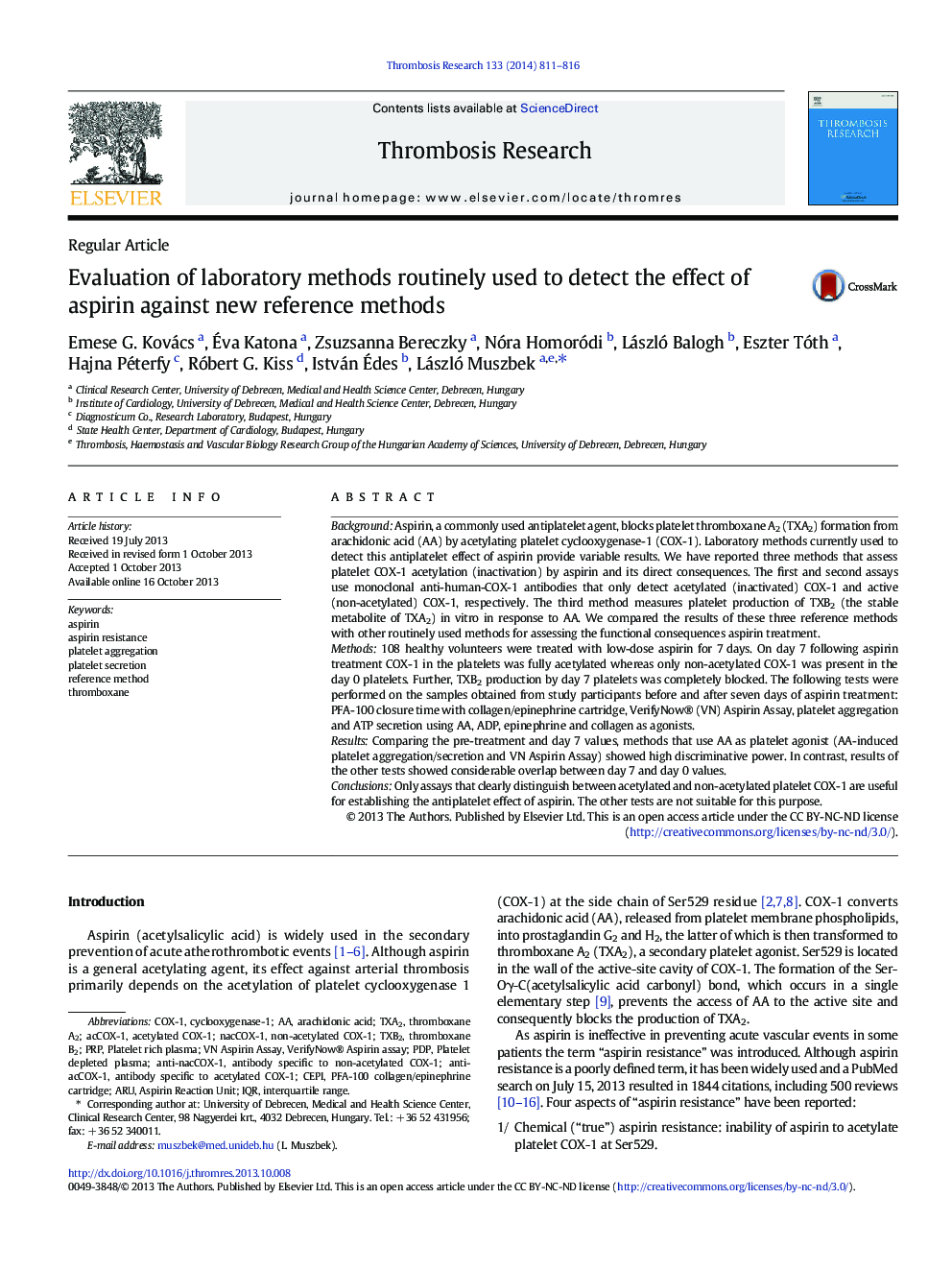| کد مقاله | کد نشریه | سال انتشار | مقاله انگلیسی | نسخه تمام متن |
|---|---|---|---|---|
| 6001219 | 1182946 | 2014 | 6 صفحه PDF | دانلود رایگان |
BackgroundAspirin, a commonly used antiplatelet agent, blocks platelet thromboxane A2 (TXA2) formation from arachidonic acid (AA) by acetylating platelet cyclooxygenase-1 (COX-1). Laboratory methods currently used to detect this antiplatelet effect of aspirin provide variable results. We have reported three methods that assess platelet COX-1 acetylation (inactivation) by aspirin and its direct consequences. The first and second assays use monoclonal anti-human-COX-1 antibodies that only detect acetylated (inactivated) COX-1 and active (non-acetylated) COX-1, respectively. The third method measures platelet production of TXB2 (the stable metabolite of TXA2) in vitro in response to AA. We compared the results of these three reference methods with other routinely used methods for assessing the functional consequences aspirin treatment.Methods108 healthy volunteers were treated with low-dose aspirin for 7Â days. On day 7 following aspirin treatment COX-1 in the platelets was fully acetylated whereas only non-acetylated COX-1 was present in the day 0 platelets. Further, TXB2 production by day 7 platelets was completely blocked. The following tests were performed on the samples obtained from study participants before and after seven days of aspirin treatment: PFA-100 closure time with collagen/epinephrine cartridge, VerifyNow® (VN) Aspirin Assay, platelet aggregation and ATP secretion using AA, ADP, epinephrine and collagen as agonists.ResultsComparing the pre-treatment and day 7 values, methods that use AA as platelet agonist (AA-induced platelet aggregation/secretion and VN Aspirin Assay) showed high discriminative power. In contrast, results of the other tests showed considerable overlap between day 7 and day 0 values.ConclusionsOnly assays that clearly distinguish between acetylated and non-acetylated platelet COX-1 are useful for establishing the antiplatelet effect of aspirin. The other tests are not suitable for this purpose.
Journal: Thrombosis Research - Volume 133, Issue 5, May 2014, Pages 811-816
